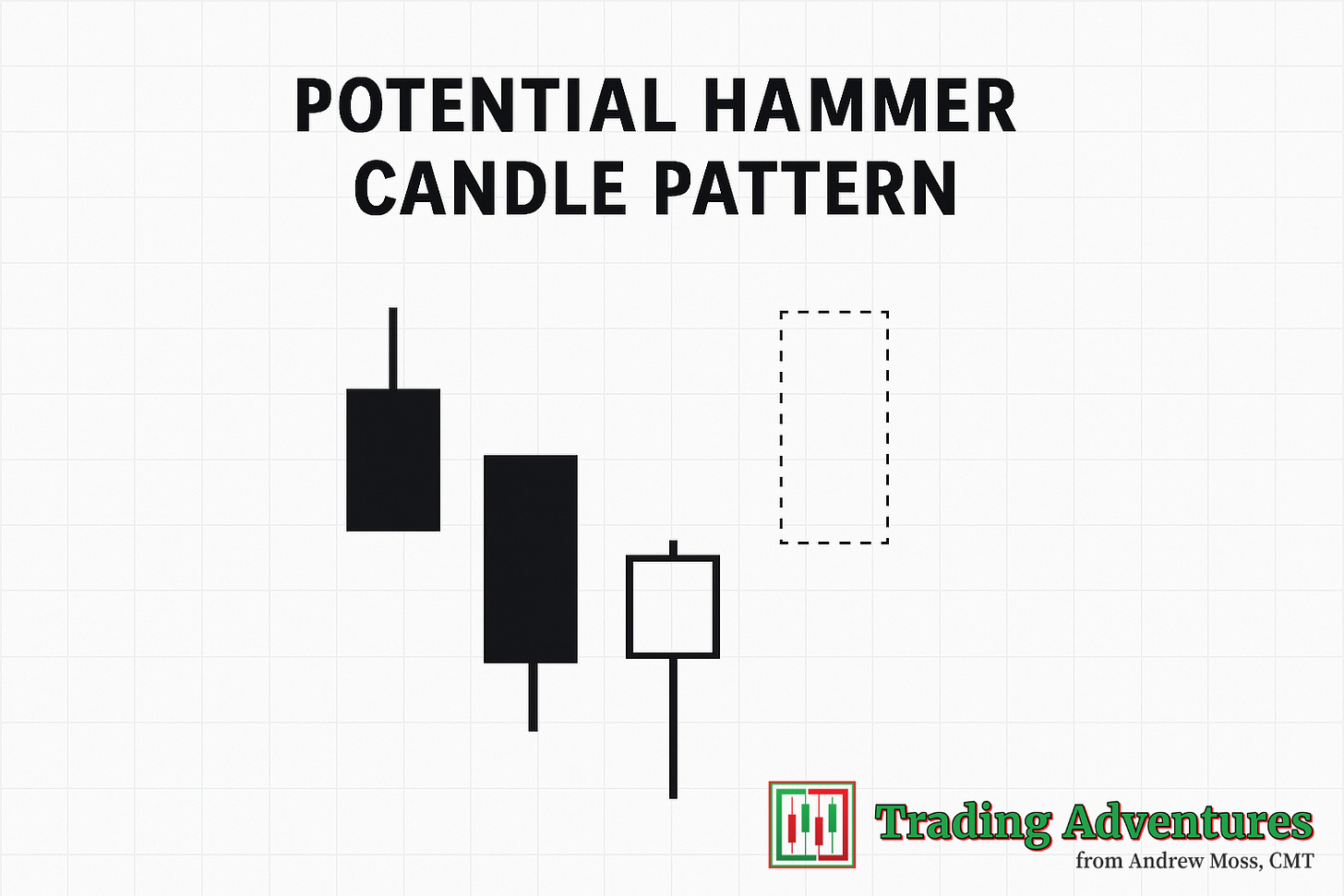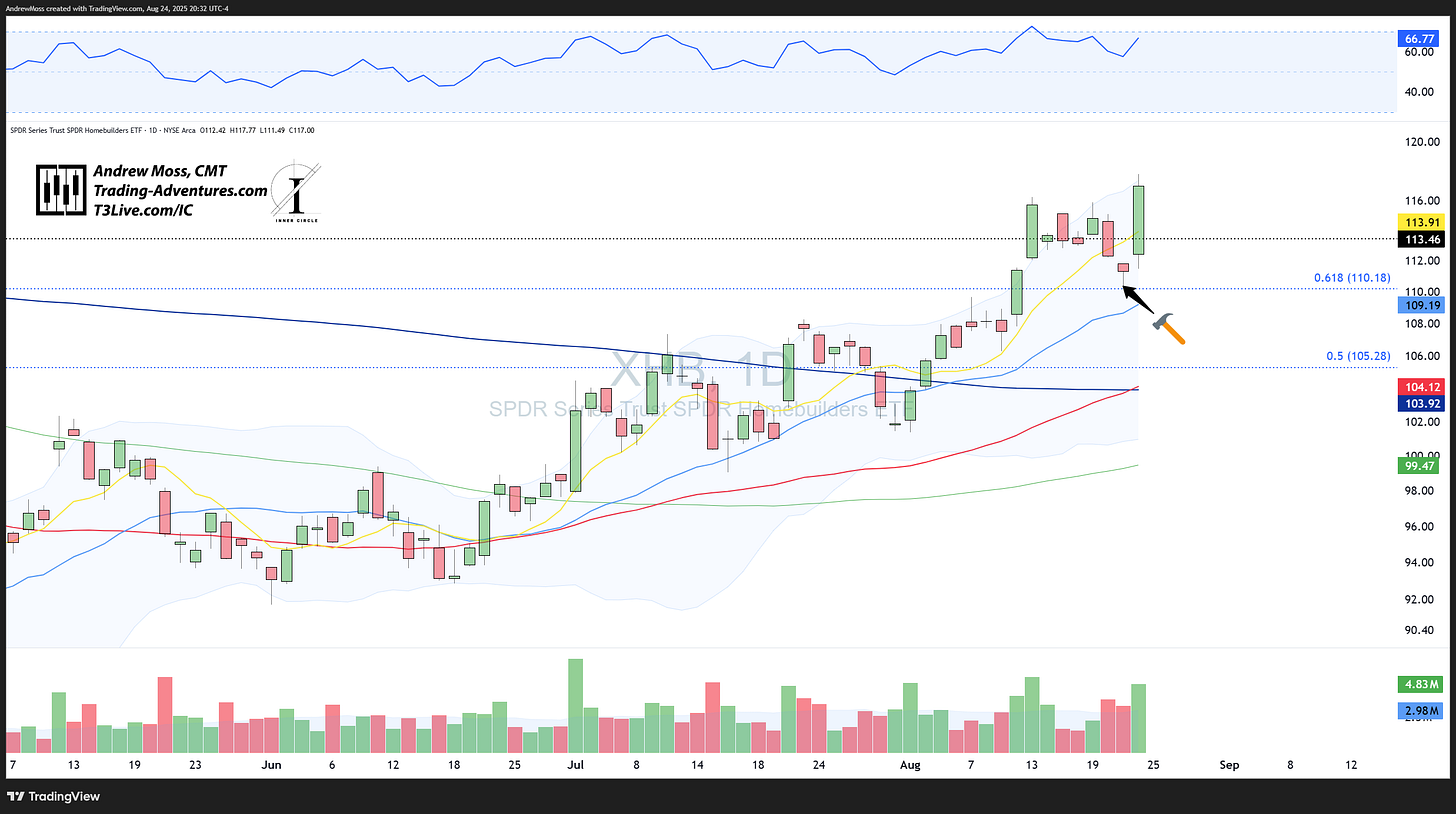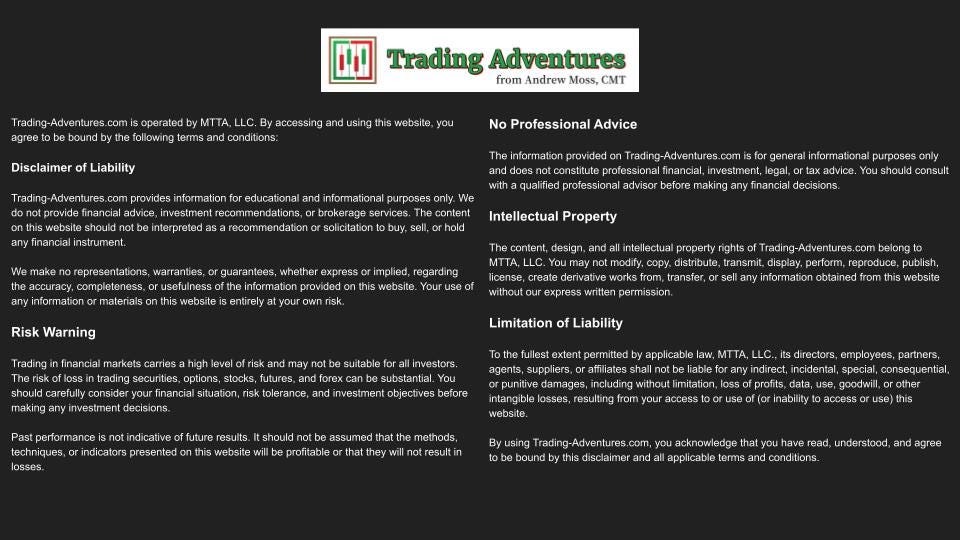How to Trade Hammer Candles with Confidence
A step-by-step guide to spotting high-probability reversals and filtering out the noise.
How to Trade Hammer Candles: Updated Guide for 2025
Originally published in 2022. Updated August 2025 with refined tools and fresh market context.
Hammer candlesticks remain one of the most recognizable and frequently discussed price patterns in technical analysis. They often mark potential reversals and can lead to powerful trades—but only when framed in proper context and executed with discipline.
Last week, we saw a wave of hammer candles form across multiple charts. This renewed appearance makes it the perfect time to revisit the hammer pattern and clarify when it actually matters.
Below is a simple 3-part framework (plus one bonus) for how I assess and trade hammer setups today.
✅ Box 1: The Hammer Follows a Clear Downtrend
This is non-negotiable.
Hammers only matter after a sustained decline. Whether you're looking at a 5-minute, daily, or weekly chart, the pattern must come after at least 5–7 periods of clear downward price action.
Without that context, it’s just noise—not a signal.
✅ Box 2: The Hammer Is Confirmed by the Next Candle
A single candle doesn’t make a reversal.
We need confirmation in the next bar. That means price must move above the high of the hammer candle. Ideally, you’ll also see that confirmation candle close green (on bullish hammers).
Once confirmation comes in, you should already have your plan in place:
Know your entry trigger
Define your stop loss (just below the hammer low)
Outline your target or trailing stop approach
Be ready before the move happens. Confirmation is your cue to act.
✅ Box 3: Extension from Key Moving Averages
Hammers are most effective when they form away from areas of recent equilibrium.
Ideally, you want to see the hammer candle with a large degree of extension away from short-term moving averages (5-day, 8-day, etc.).
That distance signals potential exhaustion and leaves room for mean reversion.
Without that extension, the edge is greatly diminished.
⭐ Bonus Points That Add Conviction
1. Hammer Aligns with a Key Support Level
If the hammer forms right at a potential support level—such as a rising moving average, anchored VWAP, Fibonacci retracement level, or prior pivot area—that adds further weight to the setup.
This alignment suggests multiple forms of technical support converging, which can help increase the odds of a successful reversal.
2. Volume Spike on the Hammer Candle
While not required, a volume spike on the hammer candle increases confidence. It suggests real buying interest and makes the pattern harder to fade.
Some Examples:
XHB – SPDR Homebuilders ETF
A well-formed hammer candle develops after a short pullback and undercuts the rising 8-day SMA. The next day confirms with a breakout above the hammer high and a strong volume surge—classic three-box setup with bonus confidence.
ALAB – Astera Labs
A deep pullback in ALAB produces a hammer right at the rising 21-day SMA (Bonus #1). Volume rises (Bonus #2), the candle is extended from short-term averages, and confirmation comes the next session—setting up a textbook reversal entry.
QQQ – Hammer Without Confirmation
QQQ printed a textbook hammer candle, but the following session failed to confirm with a move above the hammer high. That doesn't mean price can't still move higher—but it does reduce the conviction of the setup. Without confirmation on day one, it's no longer a clean three-box trade. If strength develops in the next one or two sessions, it may still trigger an entry—but the edge is diminished, and the trade must be evaluated differently.
The Game Plan
The game plan should take shape after Boxes 1 and 2 are checked.
Once Box 3 is confirmed, you should already be prepared. That means:
Entry trigger ready
Stop level defined
Target or trailing stop strategy in place
Hammer setups are, by definition, counter-trend—at least in the short term. Execute with discipline.
Final Word
Hammer candles can offer great entries—but only when framed in context and confirmed by price.
This updated framework has helped me filter out noise and focus on high-quality reversal setups. If you've seen a few show up in your watchlist lately, use this guide to evaluate them clearly.
Use this checklist to bring structure to your process—and to stay focused when the market gets noisy.
Thanks for Reading
If this hammer candle framework helped bring clarity to your process, here’s how you can help keep posts like this coming — consider a paid subscription:
📩 Become a paid supporter →
All content remains free and public. No paywalls. Just clean charts, clear signals, and consistent updates to help you trade with discipline and confidence.
And if you found this helpful — Like ❤️ Comment 💬 Share 🔁
Looking For More?
Elevate Your Trading Adventure Even Further With These Offerings.
EpicTrades Options Newsletter
Real-time trade ideas and insights, providing actionable trading insights focusing on options trades with short-term horizons, aiming to capitalize on weekly market movements.
The approach includes detailed reasoning for trades, specific options, and profit targets. It focuses on quick gains with a minimal time commitment from subscribers.
The Inner Circle
The Inner Circle is a Virtual Trading Floor (VTF) at T3 Live. I’ve been working and trading with this group since 2022. You may have noticed the logo in the watermarks on my charts.
Founded by David Prince and led by him, Rick March, and Kira Turner, the Inner Circle is a community of elite traders, including hedge fund managers, family office heads, corporate executives, financial advisors, and even professional poker players.
Fundamental, Macro, and Technical Analysis all combine to find and discuss the best opportunities in current markets.
The Disclosures
***This is NOT financial advice. This is NOT a recommendation to buy, sell, or trade any security. The content presented here is intended for educational purposes only.










